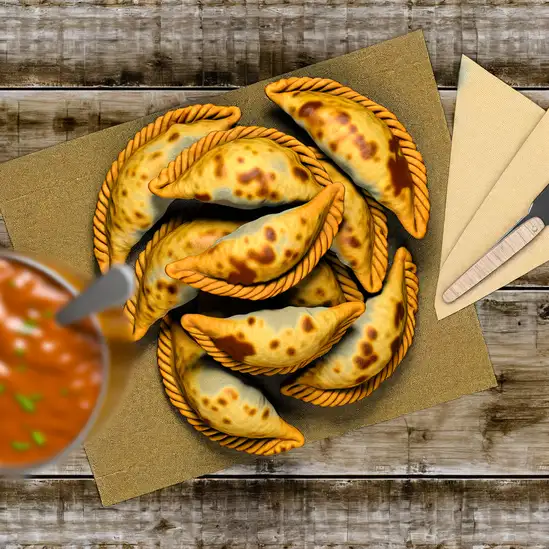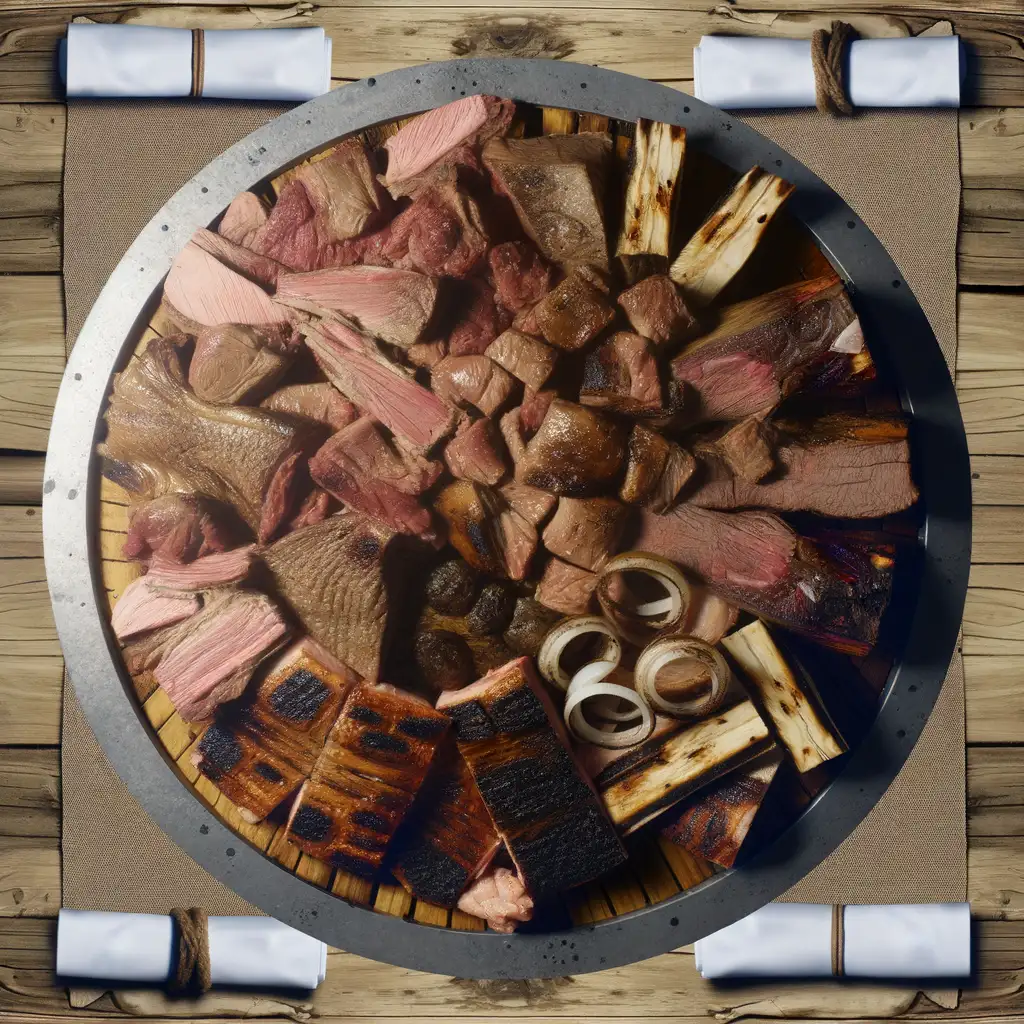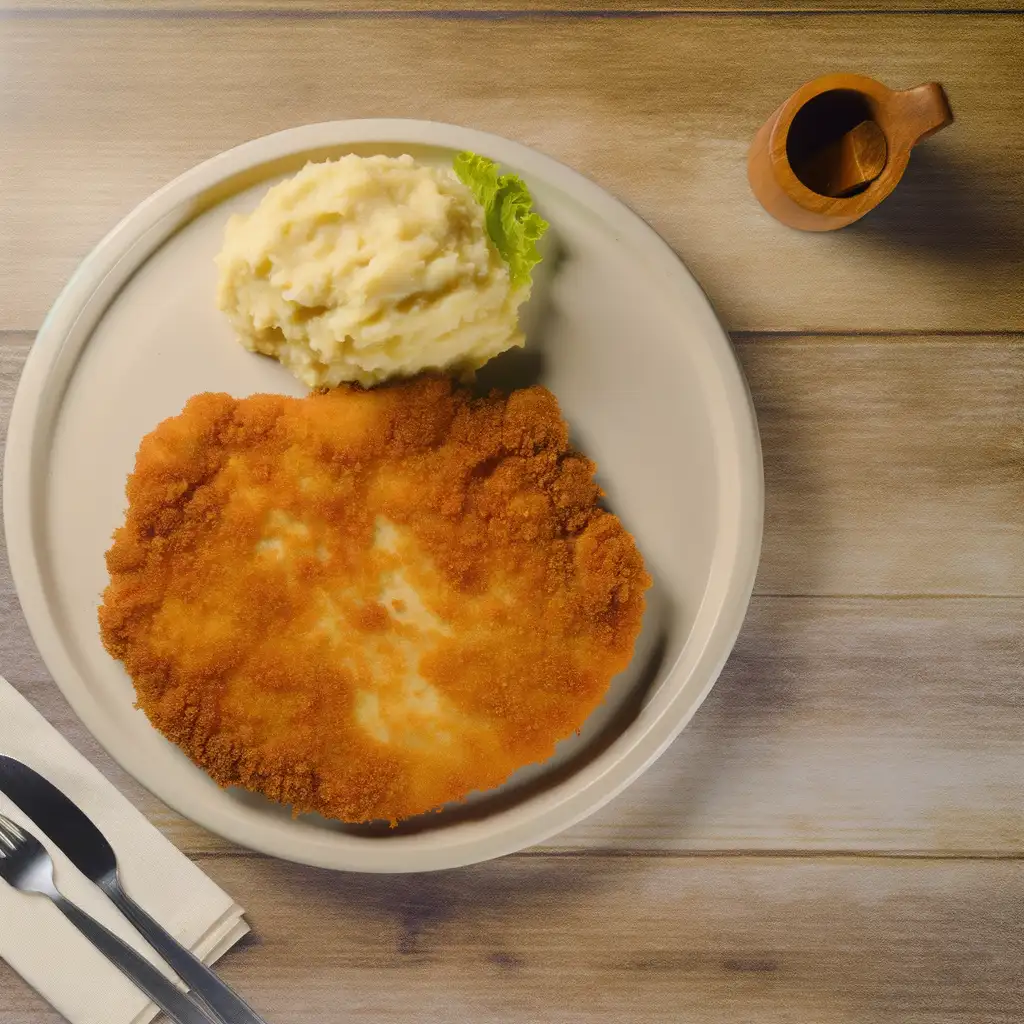



If you ever find yourself wandering through Argentina beyond the usual Buenos Aires buzz,San Juan is a place that quietly steals your heart. There’s this warm,sun-soaked calm that wraps around you the moment you step into its wide,tree-lined streets. The air carries a subtle mix of earth and grapevines,hinting at the vineyards that stretch just beyond the city’s edge. It’s a city where the Andes loom in the distance,their rugged silhouettes painting a dramatic backdrop that feels both grounding and inspiring. Walking through San Juan,you’ll hear the gentle hum of daily life—vendors chatting in the markets,the clink of glasses in cozy bodegas,and the occasional strum of a guitar from a nearby café. The city’s character is a blend of old-world charm and vibrant local pride. People here are warm and welcoming,eager to share stories over a glass of Malbec or a plate of empanadas bursting with flavor. The sunlight hits the adobe walls just right,casting golden hues that make every corner feel like a snapshot waiting to happen. What really makes San Juan stand out is its rhythm—slow,deliberate,and deeply connected to the land. Whether you’re exploring the Museo de la Memoria or hiking in the nearby Ischigualasto Provincial Park,there’s a sense of discovery that’s both humbling and exhilarating. It’s a place where you can taste the history,feel the pulse of the Andes,and leave with a quiet sense of having found something truly authentic.
The information on this page is currently being reviewed by Tripkliq and should be used as a guide only
Eng word: Hello
Eng pronunciation: OH-lah
Local language: Hola
Eng word: Goodbye
Eng pronunciation: ah-DYOS
Local language: Adiós
Eng word: Thank you
Eng pronunciation: GRAH-syahs
Local language: Gracias
Eng word: How much
Eng pronunciation: KWAN-toh KWEH-stah
Local language: ¿Cuánto cuesta?
Eng word: Toilet
Eng pronunciation: BAH-nyoh
Local language: Baño
Eng word: Help me
Eng pronunciation: ah-YOO-dah-meh
Local language: Ayúdame
Eng word: Yes
Eng pronunciation: SEE
Local language: Sí
Eng word: No
Eng pronunciation: NO
Local language: No
Eng word: Excuse me
Eng pronunciation: pehr-DOHN
Local language: Perdón
San Juan was founded in 1562 by Spanish conquistador Juan de Garay.
San Juan is the capital city of the San Juan Province in Argentina.
A devastating earthquake hit San Juan in 1944, causing widespread destruction.
San Juan is home to some of the oldest wineries in Argentina, dating back to the 19th century.
San Juan is the birthplace of Domingo Faustino Sarmiento, a prominent Argentine statesman and writer.
San Juan hosts a variety of cultural events, including the National Grape Harvest Festival.
San Juan is prone to natural disasters such as earthquakes and floods.
San Juan has numerous archaeological sites that date back to pre-Columbian times.
San Juan boasts a mix of historic and modern architecture, reflecting its diverse history.
In San Juan, the most common Power Adaptor is Type C, Type I.



Savory pastries filled with a variety of ingredients such as beef, chicken, or cheese, often baked or fried.

A traditional Argentine barbecue featuring various cuts of beef, pork, and sometimes chicken, cooked on a grill or open fire.

A hearty stew made with corn, beans, potatoes, and meat, typically enjoyed during national holidays.

Breaded and fried meat cutlet, similar to a schnitzel, often served with mashed potatoes or salad.

A sweet caramel-like spread made from slowly heating sweetened milk, commonly used in desserts and pastries.

A tangy sauce made from parsley, garlic, vinegar, and oil, often served as a condiment for grilled meats.

Grilled provolone cheese, often seasoned with oregano and served as an appetizer, typically enjoyed with bread.

Buenos Aires feels like a city that’s alive in every sense — vibrant,passionate,and endlessly inviting. From the moment you step onto its bustling streets,you’re wrapped in a mix of old-world charm and modern energy. The air carries the scent of freshly baked medialunas mingling with the faint,smoky aroma of asado grilling nearby. You’ll hear the rhythmic clatter of tango dancers’ heels on cobblestones,blending with the lively chatter spilling out of cafés and the distant hum of street musicians playing soulful melodies.
Walking through neighborhoods like San Telmo or Palermo,you’ll notice the colorful murals that tell stories of the city’s rich history and rebellious spirit. The architecture is a fascinating patchwork — elegant French-style buildings stand shoulder to shoulder with vibrant street art and quirky boutiques. There’s a warmth in the way porteños (locals) greet each other,a genuine friendliness that makes you feel like you’re part of the city’s ongoing story.
And then there’s the food — oh,the food! Juicy,perfectly grilled steaks paired with Malbec that tastes like it was made just for you. Empanadas bursting with flavor,and dulce de leche desserts that melt in your mouth. Buenos Aires isn’t just a place to visit; it’s a place to savor,to dance,to lose yourself in the rhythm of life. Trust me,once you’ve wandered its streets and soaked in its spirit,you’ll carry a piece of Buenos Aires with you long after you leave.
If you ever find yourself dreaming of a place where the mountains meet endless vineyards and the air carries a hint of earth and ripe grapes,Mendoza should be at the top of your list. Walking through its sun-dappled streets,you’ll feel this laid-back yet vibrant energy—locals chatting animatedly over coffee,the clink of wine glasses spilling out from cozy bodegas,and the distant hum of Andean winds brushing against the city’s edges. It’s a city that invites you to slow down and savor life,one glass of Malbec at a time.
Mendoza’s charm lies in its seamless blend of nature and culture. Imagine waking up to the crisp mountain air,then wandering through plazas shaded by jacaranda trees,their purple blossoms carpeting the sidewalks. The scent of fresh empanadas mingles with the earthy aroma of freshly tilled soil from nearby vineyards. Here,food and wine aren’t just meals—they’re celebrations of the land and the people who nurture it.
What really makes Mendoza unforgettable is its spirit. It’s a place where passionate winemakers share stories as rich as their wines,where the rhythm of traditional folk music pulses through local festivals,and where adventure beckons just beyond the city limits—think hiking,horseback riding,or soaking in natural hot springs. Mendoza doesn’t just offer a trip; it offers a warm embrace,a chance to connect deeply with a place that feels both timeless and alive.
If you ever find yourself craving a place where nature’s grandeur meets cozy,small-town charm,San Carlos de Bariloche is where you want to be. Imagine waking up to the crisp,pine-scented air,with the shimmering waters of Lake Nahuel Huapi stretching out before you,framed by snow-capped Andes peaks. The vibe here is relaxed but alive—locals and travelers alike gather in rustic cafés,their laughter mingling with the clinking of coffee cups and the rich aroma of freshly brewed Argentine espresso.
Walking through Bariloche’s streets feels like stepping into a storybook. Wooden chalets with colorful shutters line the avenues,and the scent of chocolate wafts from every corner,a nod to the city’s famous artisanal chocolatiers. You’ll hear the soft crunch of snow underfoot in winter or the gentle rustle of leaves in summer,while the distant call of birds adds a natural soundtrack to your explorations. The city pulses with a blend of European alpine influences and Patagonian spirit,creating a unique cultural tapestry that’s both warm and inviting.
What really makes Bariloche unforgettable is how it invites you to slow down and savor the moment. Whether you’re hiking through ancient forests,savoring a plate of fresh trout by the lake,or simply watching the sunset paint the mountains in shades of pink and gold,there’s a deep sense of peace here. It’s a place that stays with you long after you leave,whispering stories of wild beauty and heartfelt hospitality.
Imagine stepping into a place where the wildness of nature meets the warmth of a close-knit community—that’s Ushuaia for you. Nestled at the very tip of South America,this city feels like the edge of the world,with snow-capped mountains standing guard over the deep blue waters of the Beagle Channel. The air is crisp and fresh,carrying hints of pine and salty sea spray,and when you walk along the harbor,you can almost hear the distant call of sea lions mingling with the chatter of locals and travelers alike.
Ushuaia’s charm isn’t just in its dramatic landscapes but in its spirit. The streets hum with a quiet energy—cozy cafés filled with the rich aroma of freshly brewed coffee,small artisan shops showcasing handmade woolen goods,and restaurants where you can savor Patagonian lamb or freshly caught king crab,each bite bursting with the rugged flavors of the region. There’s a ruggedness here,sure,but also a surprising softness in the smiles of the people who’ve carved out a life in this remote corner.
What really stays with you is the sense of adventure that pulses through the city. Whether you’re gearing up for a trek through Tierra del Fuego National Park,hopping on a boat to spot penguins,or simply watching the sunset paint the sky in fiery hues,Ushuaia invites you to slow down and soak it all in. It’s a place that feels alive,raw,and deeply welcoming—like a story you’re eager to be part of.
If you ever find yourself craving a place where the wildness of nature meets the warmth of a small coastal town,Puerto Madryn in Argentina should be on your radar. The moment you arrive,there’s this fresh,salty breeze that carries the promise of adventure and calm all at once. The town itself feels laid-back but alive,with colorful buildings lining the waterfront and locals who greet you with genuine smiles and a relaxed pace that invites you to slow down and soak it all in.
Walking along the shore,you’ll hear the distant calls of sea lions and the rhythmic crashing of waves against the rugged cliffs. The air smells faintly of the ocean mixed with the earthy scent of Patagonian scrubland nearby. It’s a sensory blend that feels both invigorating and grounding. Don’t miss the chance to taste the local seafood—fresh,tender,and often paired with a glass of crisp Argentine white wine that perfectly complements the coastal flavors.
What really makes Puerto Madryn stand out is its connection to the natural world. It’s the gateway to the Valdés Peninsula,where you can witness southern right whales breaching just offshore or watch penguins waddle along the beach. The town’s character is shaped by this deep respect for the environment,and you can feel it in the way people talk about their home—with pride and a touch of awe. Visiting here isn’t just about seeing a place; it’s about feeling a rare harmony between land,sea,and community.
Imagine strolling along a sun-dappled Rambla,the salty breeze from the Río de la Plata mingling with the rich aroma of freshly brewed coffee and grilled meats wafting from nearby cafés. That’s Montevideo for you—a city that feels like a warm embrace,where the pace is unhurried but the energy hums quietly beneath the surface. It’s a place where old-world charm meets a laid-back coastal vibe,and every corner invites you to slow down and savor the moment.
Walking through Ciudad Vieja,the historic heart,you’ll hear the clatter of footsteps on cobblestones,the murmur of locals chatting over mate,and the occasional strum of a guitar from a street musician. The colorful murals and colonial architecture tell stories of a city proud of its roots yet open to creative expression. Montevideo’s markets burst with fresh produce,artisanal cheeses,and the unmistakable scent of asado grilling—Uruguay’s beloved barbecue that’s as much a social ritual as a meal.
What makes Montevideo truly special is its genuine warmth. People here have a relaxed friendliness that makes you feel like you belong,even if you’re just passing through. Whether you’re sipping a craft beer in a cozy bar or watching the sunset paint the sky over the coastline,there’s a comforting rhythm to life here that stays with you long after you leave. It’s not just a city to visit—it’s a place to experience,to breathe in,and to carry with you.
Scammers may install skimming devices on ATMs to steal card information. Use ATMs in secure locations, such as inside banks, and check for any suspicious devices.
Tourists may be offered unfavorable exchange rates or counterfeit bills when exchanging money at unofficial locations. Use authorized exchange offices or banks.
Scammers may pose as representatives of charities, asking tourists for donations. Verify the legitimacy of any charity before giving money.
Some taxi drivers may not use the meter or claim it is broken, charging tourists inflated fares. Always insist on using the meter or agree on a price beforehand.
Unlicensed individuals may pose as tour guides, offering overpriced or low-quality tours. Verify the credentials of guides and book through reputable agencies.
Vendors in tourist-heavy areas may charge inflated prices for souvenirs. Compare prices at different shops and avoid buying from pushy sellers.
In crowded areas, pickpockets may target tourists by distracting them or taking advantage of their inattentiveness. Keep valuables secure and be cautious in busy places.
Some street performers may aggressively demand tips after engaging tourists. Watch performances from a distance if you do not wish to tip.
Argentina has strict drug laws, and the possession, sale, or trafficking of illegal drugs is a criminal offense. While small amounts of marijuana for personal use have been decriminalized in some cases, this is subject to judicial interpretation and does not mean it is legal. Tourists should avoid carrying or using any drugs, as penalties can be severe, including imprisonment. Always adhere to local laws and avoid any involvement with illegal substances.
In San Juan, Argentina, smoking is regulated under national and provincial laws. Smoking is prohibited in enclosed public spaces, workplaces, and on public transportation. This includes restaurants, bars, and shopping centers. Designated smoking areas may be available in some locations, but tourists should always look for signage or ask staff. Smoking is also banned in certain outdoor areas, such as near schools and hospitals.
Vaping is subject to similar restrictions as smoking in San Juan. It is prohibited in enclosed public spaces and workplaces. Additionally, the sale and advertising of e-cigarettes are regulated under national laws, and some provinces have stricter rules. Tourists should avoid vaping in public areas unless it is explicitly allowed.
What are other people saying about San Juan?
Recent Social posts about San Juan
There is nothing to show you for now.